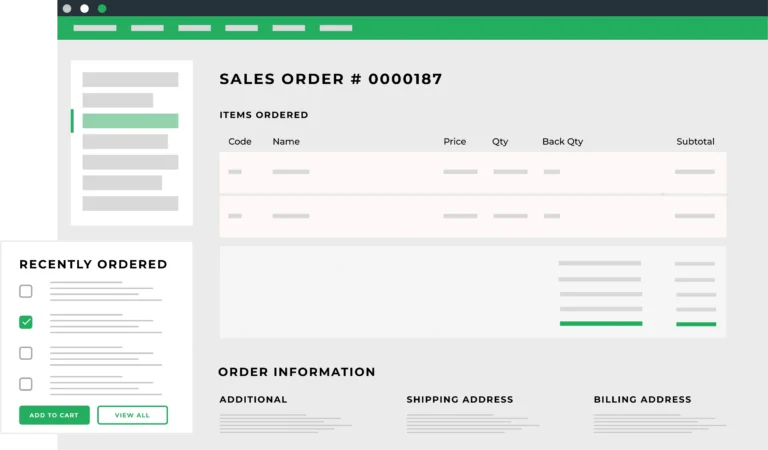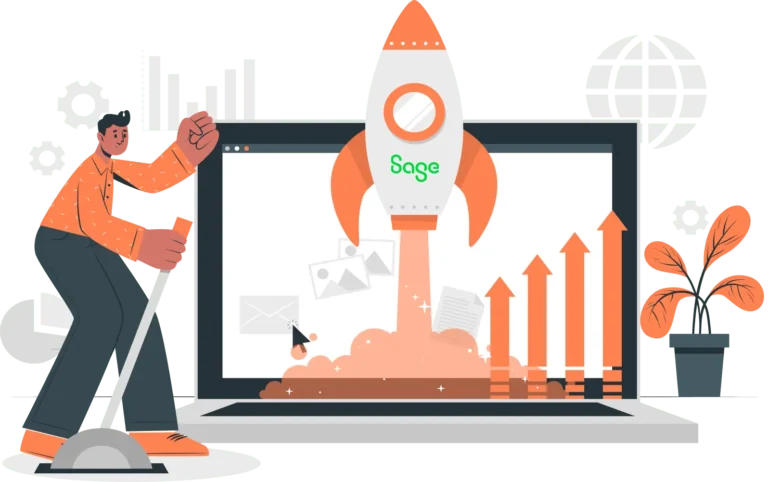Sage Fixed Assets
Easily track and manage fixed asset depreciation, transfers, and maintenance requests.


automate, streamline, and track physical assets
What Is Sage Fixed Assets Management?
Fixed assets are items that a company intends for long-term use and will not be consumed or converted into cash or cash equivalents within one year. These assets typically make up one of the largest items on a company’s balance sheet. Determining the value of these assets is crucial to determining the overall value of your company.
Since fixed assets are often physical assets like vehicles and equipment, part of fixed assets management involves calculating asset depreciation or the value lost over time. Companies also face regulatory or legal requirements concerning asset management and reporting. They may face serious repercussions for incorrect depreciation calculations, including fines and shareholder lawsuits.
Sage Fixed Assets, which is also known as Sage FAS, is about more than simply tracking depreciation. It records project details and tracks and manages asset condition and maintenance. It also provides advanced reporting for your financials, and reduces or eliminates asset loss due to theft or mismanagement. Easily track your assets from acquisition to disposal. Sage FAS improves management of your fixed asset inventories while improving compliance with all tax rules and regulations. Increase control of your fixed assets while improving your bottom line with Sage FAS.
one centralized business management solution
How Sage Fixed Assets Works
Managing fixed assets can be challenging for any business, particularly one with large amounts of equipment or equipment in multiple locations. Sage FAS integrates directly with other state-of-the-art Sage ERP business management solutions. Together, the provide one solution that connects your financial and operational data with fixed assets management.
Sage FAS includes more than 50 depreciation methods including MACRS 150 percent and 200 percent (formulas and tables), ACRS, Straight-Line, Modified Straight-Line (formulas and tables), Declining Balance, Sum-of-the-Years-Digits, as well as user-defined. It also has 300,000 IRS tax and GAAP rules. Sage FAS integrates with your Sage application’s general ledger program to post depreciation calculations.
Gain more insight into the state of your fixed assets with better visibility, custom reporting, and comprehensive depreciation calculations.

BENEFITS
Benefits of Sage Fixed Assets
Complete Lifecycle
Manage fixed assets over their full life cycle, from planning to disposal
Automate Depreciation
Automated complex and straight-line depreciation calculations
Increase Visibility
A complete view of your assets in real time
Improve Maintenance
Improve asset condition and maintenance with better reporting
Save Money
Improve fixed assets management while reducing costs
Avoid Risk
Avoid risks associated with unidentified ghost and zombie assets
Sage Fixed Assets with Sage ERP
Sage Fixed Assets integrates with Sage’s other business management solutions so your company can manage all of its data in a single platform. You’ll reduce manual data entry and utilize better depreciation methods with improved fixed asset accounting. It also improves compliance with tax rules, including monitoring tax and insurance changes.
Increase efficiency and streamline your workflows by adding Sage Fixed Assets to your Sage solutions package.
Fixed Asset Management FAQ
What is a fixed asset?
A fixed asset is an asset a company intends for long-term use. It will not be converted into cash or cash equivalents within a year.
What are fixed asset examples?
Fixed assets can be both tangible and non-tangible. Tangible assets are physical assets like buildings, equipment, machinery, and vehicles. Non-tangible assets are assets that can’t be touched, like copyrights, software, and patents.
What is the role of a fixed asset manager?
A fixed asset manager is responsible for maintaining the fixed asset register, tracking changes and movements of fixed assets, calculating depreciation and lease payments, managing asset disposals, and analyzing and reporting on the costs and income associated with fixed assets. They used automated fixed asset solutions like Sage FAS to streamline and improve asset management.
What is the fixed asset process?
The fixed asset process includes all the steps involved in acquiring, using, and either selling or disposing of assets. Businesses usually manage these steps using automated fixed assets software to save time and money. The standard process consists of six steps or facets:
- Planning – When companies decide whether to acquire the asset.
- Acquisition – When companies actually purchase the asset.
- Maintenance – When companies repair or otherwise maintain an asset that is in use.
- Depreciation – When companies calculate the value that asset has lost over time.
- Disposal – When companies retire, sell, or otherwise dispose of the asset.
- Reporting – When companies report on the status of fixed assets.
What is asset management?
Asset management is a broad concept that involves overseeing different types of assets with the aim of increasing an organization’s capital or income. This may include trading financial assets like stocks and bonds or managing physical assets such as real estate.
Sage Fixed Assets or Sage FAS offers unlimited possibilities with all reports, including Foreign Currency, Consolidated, Summary, Asset Insurance, and more. It’s a modern asset tracking system that integrates with Sage ERP.
Can Sage FAS track construction in progress?
Yes, Sage FAS’s construction in progress (CIP) feature allows companies to track and manage assets before they are put into service. Managers can easily view the status of projects that are currently under construction, including monitoring the physical and financial completion of projects, remaining in compliance with tax legislation, and more.
WHAT WE DO
Other Solutions

E-Link
E-Link forms a seamless, highly customizable bi-directional data synch between Sage and Magento Adobe Commerce, WooCommerce, and Shopify.

Automated Inventory Cycle Count
AICC automates the cycle counting process in Sage 100, Sage 300, and Sage 500, including automatically determining what items should be counted each day.

